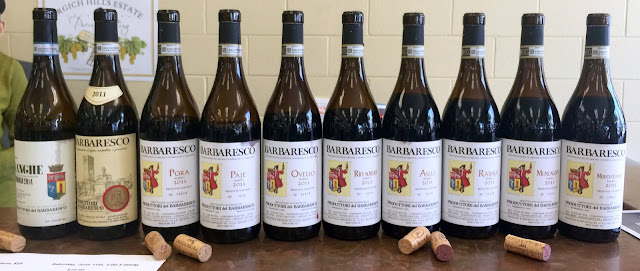2011 Produttori del Barbaresco Horizontal Tasting

Produttori del Barbaresco is the benchmark producer of Barbaresco. Always reliable in quality, they represent remarkable value too. And with their 9 single-vineyard riserva cru's, you get a look at the nuances of the various terroirs of Barbaresco. Though 2011 was a warmer than ideal year, it is considered a good vintage in Barbaresco, with wines on the riper, richer, darker, sexier end of the scale, but with good tannic structure and sufficient acidity, giving them serious ability to age. The fruit is by no means roasted or raisiny, as may happen in hot years. In short, 2011 vintage in Barbaresco is a vintage of considerable early appeal, but with serious capacity to age. Here are my impressions of the 2011 line-up from Produttori del Barbaresco, in the order I tasted them. There was a clear familial similarity among all the wines, including the Normale bottling. They were suave, rich, ripe, and tannic, shifting from red berries to blueberries and plums, hints of herbs and spi



